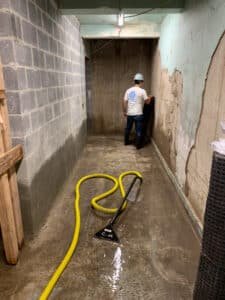Dealing with mold can be a nightmare for any homeowner. It’s unsightly, damaging, and downright unhealthy. If you’ve found yourself staring at a patch of mold, you might be wondering, “Does bleach kill mold?” Let’s unravel this together. For those in need of expert help, contact Floodco USA.
What is Mold?
Mold is like that unwanted guest who shows up uninvited and refuses to leave. It thrives in damp, dark places like bathrooms, basements, and under sinks. Not only is it unsightly, but mold can also wreak havoc on your health, causing respiratory issues and allergies. Knowing how to treat mold from water damage is essential for keeping your home safe and healthy.
Common Methods to Remove Mold
There are countless ways people try to evict mold from their homes. Some folks swear by natural remedies like vinegar and baking soda, while others opt for powerful commercial products. But what about bleach? Is it the miracle mold-killer we all hope it is?
Does Bleach Kill Mold?
Let’s dive into the nitty-gritty. Does bleach kill mold? Yes, but with some caveats. Bleach can kill mold on non-porous surfaces like glass and tiles. However, when it comes to porous materials like wood and drywall, bleach often falls short. It may kill the surface mold, but it doesn’t reach the roots that lie deep within. This means the mold can come back, sometimes stronger than before.
Imagine trying to remove a weed by trimming just the leaves. The roots remain, and the weed grows back. Similarly, while bleach might clear visible mold, the underlying problem persists. For a more in-depth look, check out this guide on water damage to drywall and its remediation.
Pros and Cons of Using Bleach
Using bleach for mold removal has its advantages and drawbacks. On the bright side, bleach is easy to find and fairly inexpensive. It can effectively kill mold on hard, non-porous surfaces like tiles and glass, while also disinfecting these areas.
However, the downside is that bleach isn’t very effective on porous materials such as wood and drywall. These materials can absorb mold deeply, where bleach can’t reach. Additionally, bleach produces strong fumes that can be harmful if inhaled. And perhaps most importantly, bleach might not prevent mold from coming back. If you’re facing recurring mold problems, it might be time to explore other solutions.
Alternative Mold Removal Solutions
There are various alternatives to bleach for tackling mold. Vinegar is a popular natural option, as it’s non-toxic and works on many surfaces. Hydrogen peroxide is another safe choice that penetrates deeper than bleach. Additionally, commercial mold removers are specifically designed for mold and can often be more effective than bleach. For more practical advice, visit this helpful article on dealing with water damage and mold.
When to Seek Professional Help
Sometimes, no matter how hard you try, mold just keeps coming back. If you’re facing a persistent problem, it might be time to call in the professionals. Floodco USA offers comprehensive mold removal services to keep your home safe and mold-free. Check out our expert team at this link.
Conclusion
So, does bleach kill mold? Yes, but with limitations. It works well on non-porous surfaces but doesn’t penetrate deeper materials. For a thorough and lasting solution, consider other methods or professional help. Floodco USA is here to assist with all your mold removal needs. Visit us at https://floodcousa.com/.



